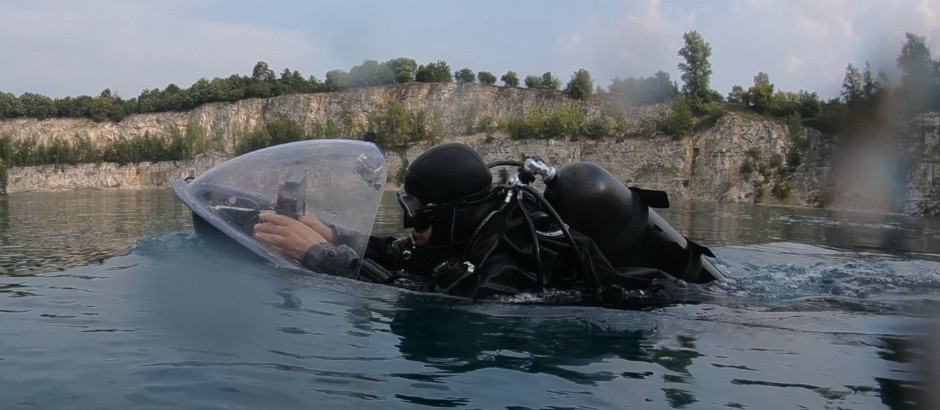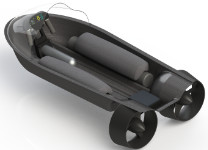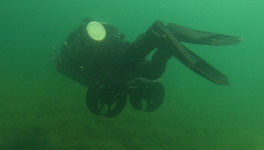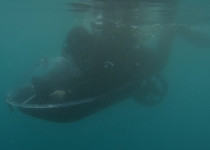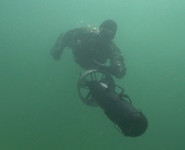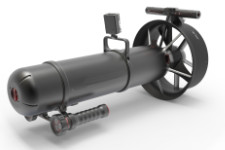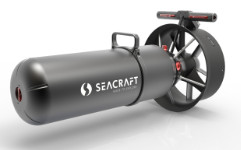Seacraft DPC
 Polish Diver Propulsion Vehicle (DPV) manufacturer Seacraft is developing a Diver Propulsion Craft (DPC) which bridges the gap between DPVs and full-size SDVs (Swimmer Delivery Vehicles). The one/two/three/four-person craft allows greater speed, load carrying and endurance than a DPV whilst still being small enough to manhandle or carry within a submarine.
Polish Diver Propulsion Vehicle (DPV) manufacturer Seacraft is developing a Diver Propulsion Craft (DPC) which bridges the gap between DPVs and full-size SDVs (Swimmer Delivery Vehicles). The one/two/three/four-person craft allows greater speed, load carrying and endurance than a DPV whilst still being small enough to manhandle or carry within a submarine.
The DPC fits within the ’DPD’ category of vehicles which are larger and more robust than regular DPVs, allowing them to be better integrated into Special Forces concept of operations. It is a growing market thanks to the high cost of full-size SDVs and increases in battery, navigation and propulsion technology closing the gap between ‘ride on’ systems and ‘ride-in’ systems. Polish combat swimmers currently use the US supplied Stidd DPD, which coined the term ‘DPD’. Other competitors include the JFD Torpedo SEAL, Vogo DPD-200 and 3PM Kraken.
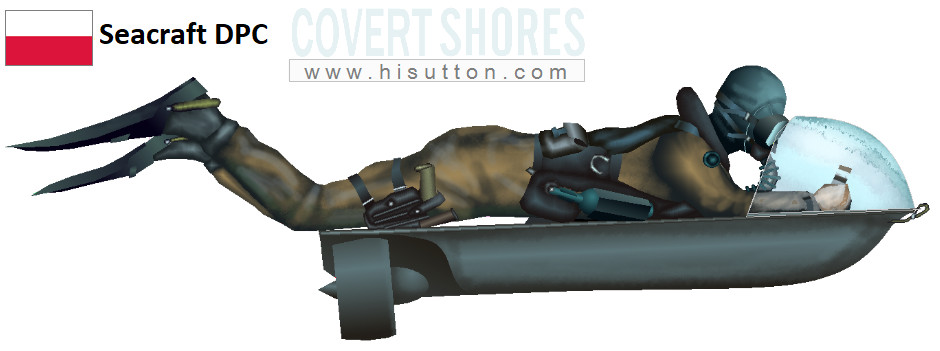
The Seacraft DPC has a simple but hydrodynamic layout which offers the driver good protection in both submerged and surfaced modes. Their hands are well protected deep within the watershield and a basic quick release harness attachment can be worn. The driver can wear either chest-mounted or back-mounted breathing apparatus.
Learn EVERYTHING about Special Forces subsCovert Shores 2nd Edition. A world history of naval Special Forces, their missions and their specialist vehicles. SEALs, SBS, COMSUBIN, A-DYK, Sh-13, Spetsnaz, Kampfschwimmers, Commando Hubert, 4RR and many more.
Check it out on Amazon
The DPC has a useful load-carrying capability for cross-beach missions. The integral buoyancy bags allow 20-25 kg of negatively buoyant payload to be carried on the craft, and It can tow a payload container. Normally it can carry a passenger in the standard above-and-behind position, but there are plans to attach protected passenger positions on either side of the craft allowing three passengers.
The standard model can fit inside a submarine via a standard lock-out trunk. There are plans for a folding version to allow it to fit within a standard NATO 533mm (21”) torpedo tube if required.
DPC Specifications
Length: 1.6 meters
Beam: 0.7 meters
Height: 0.6 meters
Crew: 1 + up to 3 PAX
Weight: <46 kg
Speed: 4.5 knots maximum underwater, 5.5 knots surfaced
Range: 18 nm @ cruising speed
Endurance: Up to 6 hours
Payload: up to 20-25 kg negative payload on craft, ability to tow payload containers
Key technologies
Seacraft have developed several technologies for the DPV/DPD craft, influenced also by their work in aerospace.
The patented ‘MAGnetIC’ (aka MAGIC) propulsion system allows the motor to be fully immersed. This completely eliminates the need for transmission system, propeller-shaft sealings, instead working directly in the water. This improves robustness, cooling, and acoustic signature (tbc). The motors are brushless, PMSM, and BLAC controlled.
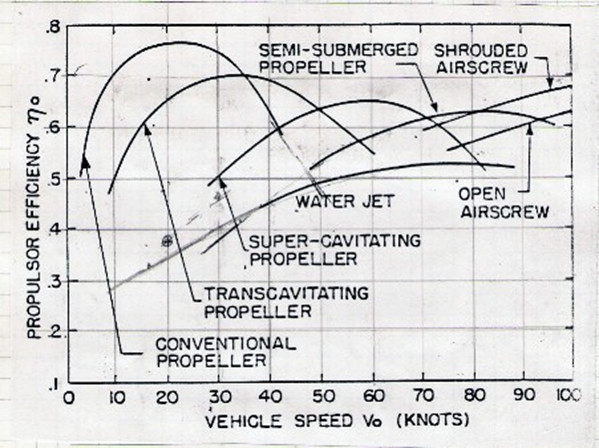 The propellers are designed specifically for diver’s speed and load. Through the use advanced modelling technologies, the propeller is extremely efficient in battery power transition to thrust. The solution used for this speed range has a much higher efficiency than an equivalent water jet drive (approximately 5 times greater for diver’s speed).
The propellers are designed specifically for diver’s speed and load. Through the use advanced modelling technologies, the propeller is extremely efficient in battery power transition to thrust. The solution used for this speed range has a much higher efficiency than an equivalent water jet drive (approximately 5 times greater for diver’s speed).
Behind the propeller is a post-swirl stator system inspired by jet engine construction. All propellers work cause torque effect- natural consequence of the rotating action, which causes the water stream to swirl and creates turning force on scooter handle what increases diver’s fatigue. Seacraft’s system interacts with rotating water column, changing its rotation force for thrust. This gives more power and ejects a more uniform water column. The result is increased maneuverability and comfort without the need for use of dual-scooter platforms or counter-rotating propellers.
1. 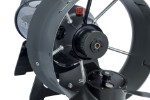 2.
2. 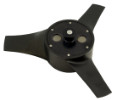 3.
3. 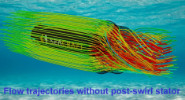 4.
4. 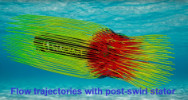
- The ‘MAGnetIC’ immersed motor.
- Specifically design propeller with high efficiency
- Fluid dynamics modeling of propeller without Post-swirl stator system.
- Fluid dynamics modeling with Post-swirl stator system. Note how much straighter the flow is.
Get The essential guide to World Submarines
This Covert Shores Recognition Guide Covers over 80 classes of submarines including all types currently in service with World Navies.Check it out on Amazon
TAC1000 & TAC2000 DPVs
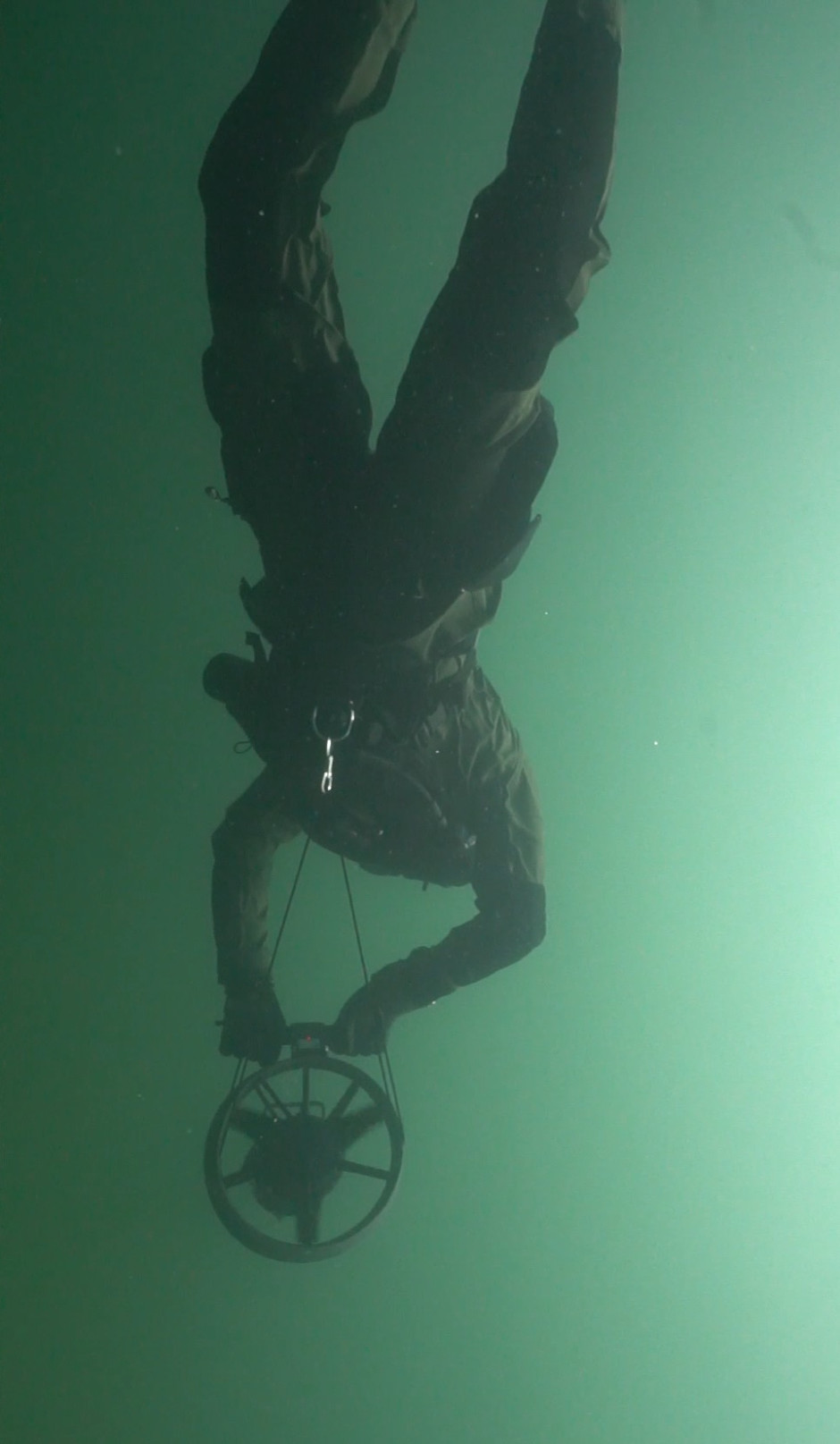
The DPC is complememted by the TAC1000 and TAC2000 military-spec diver propulsion vehicles (DPVs) which are based on Seacraft’s successful civilian offering. These feature the same key technologies described above but in a simpler diver-tug layout.
The two designs are similar, with the TAC2000 model being noticeably larger to accommodate twice the battery capacity. This provides greater speed and range.
The DPVs use bollard 360N+ electric motors with 37.8V Li-Ion batteries. Recharging takes 2-4 hours for the TAC1000 and 4- 8 hours for the larger TAC2000. They have 11 gears (including reverse) and an LCD display of relevant parameters (battery status in%, gear number, engine run time and others). Overall construction is mostly aluminum (96%), with smaller amounts of technopolymers (3%) and stainless steel (1%).
TAC1000/2000 Specifications
Length: 0.84/0.8 meters
Casing diameter: 0.16/0.2 meters
meters Height: 0.41 meters
Crew: 1
Weight: 15.9/22.9 kg full
Speed: >3.5 knots maximum
Range: > 8.5/17 nm @ cruisingspeed
Endurance: Up to 11 hours
Motors: Bollard 360N
In 2018 Seacraft scooters set several world records including the relevant Guinness World Record for distance traveled underwater, and three depth records including a 316m dive on closed circuit breathing apparatus which is a world CCR depth record.
Related articles (Full index of popular Covert Shores articles)

 Polish Blotniak SDV
Polish Blotniak SDV

 Stidd Diver Propulsion Device (DPD)
Stidd Diver Propulsion Device (DPD)

 Mignatta first human torpedo
Mignatta first human torpedo

 Alseamar MURENE SLV
Alseamar MURENE SLV

 WTD-71 Aquatechnik SDV projects
WTD-71 Aquatechnik SDV projects

 Nerpa anti-diver UUV
Nerpa anti-diver UUV

 Naval Spetsnaz in Hybrid Warfare (Russian SDVs and DPVs)
Naval Spetsnaz in Hybrid Warfare (Russian SDVs and DPVs)

 Rotinor BlackShadow 730 and Divejet 414 Diver Propulsion Vehicles
Rotinor BlackShadow 730 and Divejet 414 Diver Propulsion Vehicles

 Patriot 3M diver propulsion (Kraken, DAAPV, Jetboots)
Patriot 3M diver propulsion (Kraken, DAAPV, Jetboots)

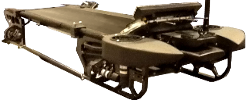 SharkMarine Mako DDS, Navigator, EagleRay etc
SharkMarine Mako DDS, Navigator, EagleRay etc


 TorpedoSEAL Diver Propulsion Device
TorpedoSEAL Diver Propulsion Device

 Bonex HP and HP Shuttle Diver Propulsion Vehicles
Bonex HP and HP Shuttle Diver Propulsion Vehicles

 Ortega Mk.1 Swimmer Delivery Vehicle
Ortega Mk.1 Swimmer Delivery Vehicle


